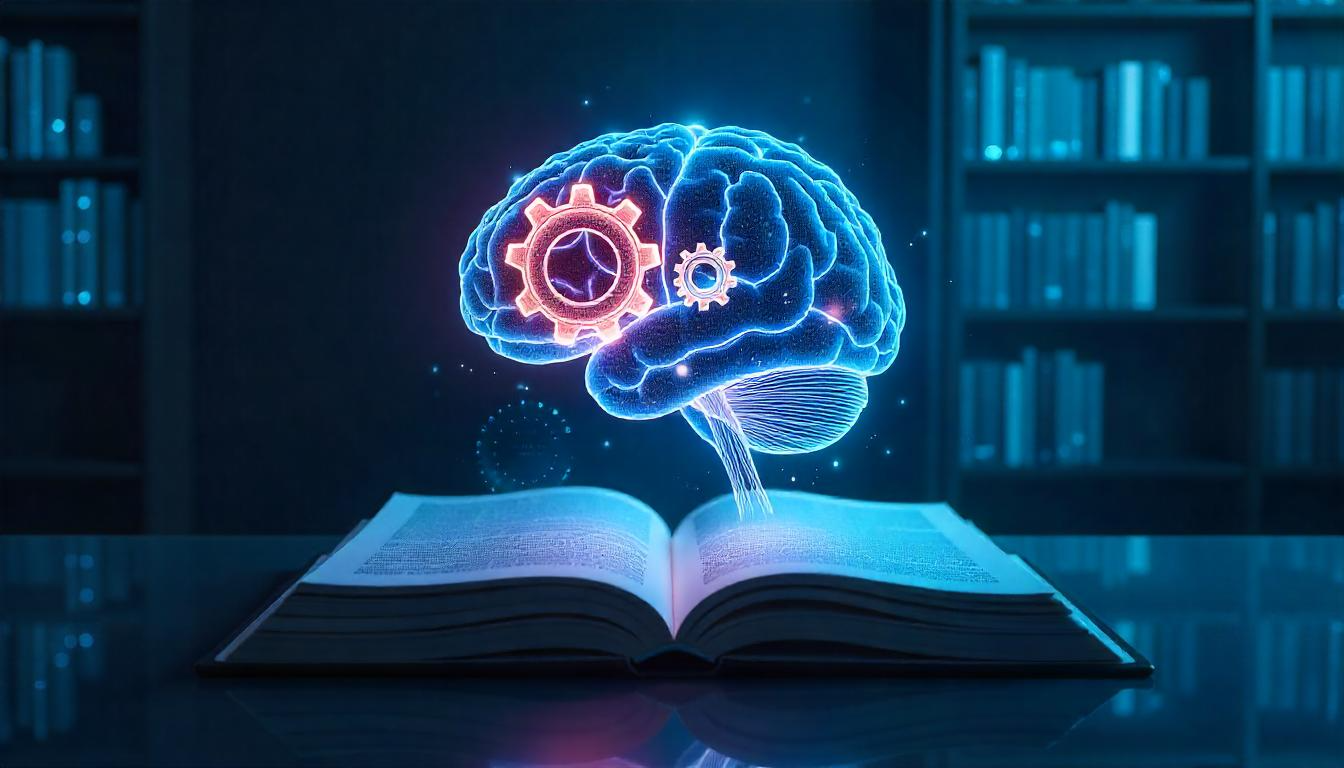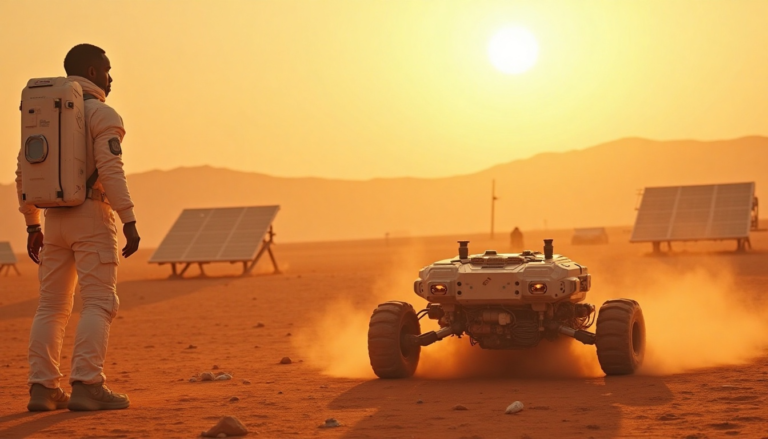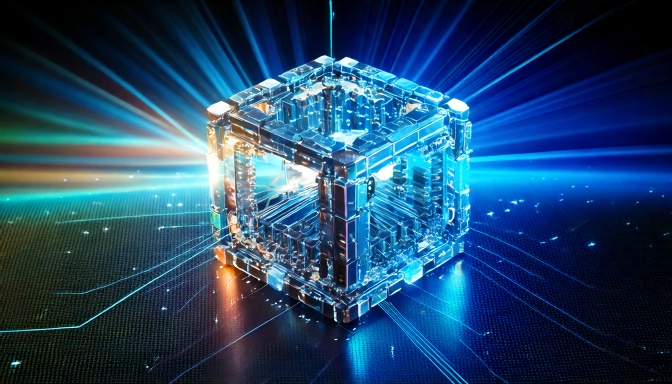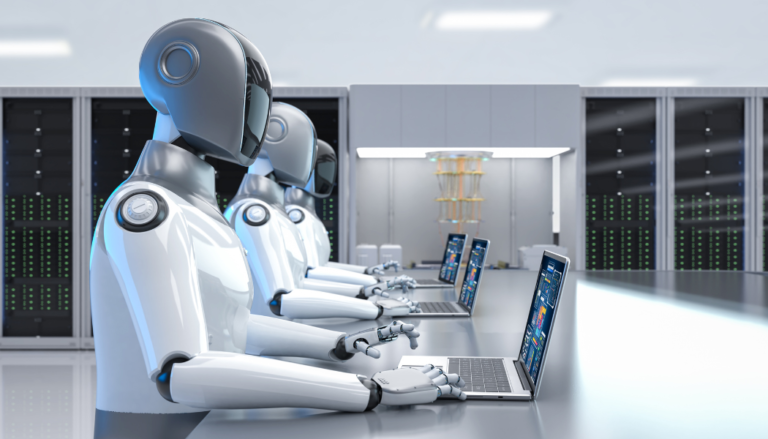Human vs. Algorithm: Essential Skills for the Future in the AI Era
In a world where artificial intelligence increasingly automates traditional professional tasks, the key to success lies in competencies resistant to algorithmization. Discover which skills will remain exclusively human and how to consciously build advantage in the economy of the future.
1. Context: Automation and the Future of Work
Future Work Scenarios
Based on the interesting lecture “Nieautomatyzowalne kompetencje przyszłości – jak budować trwałe przewagi w świecie AI – Iwo Zmyślony”, three main scenarios for the future of work can be identified in the context of progressive automation:
| Scenario | Description | Potential Consequences |
|---|---|---|
| Universal Basic Income | A significant portion of the population receives subsistence funds | Possible stagnation in development, increased consumption, decreased work motivation |
| Gradual Skill Decline | Lack of necessity to use certain skills leads to their disappearance | “Deskilling”, technology dependence, digital amnesia |
| Technological Oasis | The elite possessing technology creates an enclave of prosperity | Deepening social inequalities, degradation of the majority of the population |
It’s worth noting that according to the McKinsey Global Institute report, by 2030, up to 375 million workers (about 14% of the global workforce) may need to change occupational categories due to automation.
Susceptibility of Various Tasks to Automation
According to the analyzed sources, research by Anthropic indicates that administrative and technical work, constituting over 1/9 of tasks in the American economy, is already nearly 80% supported by AI. Similarly, the Future of Jobs Report 2023 by the World Economic Forum predicts that by 2027, 44% of employee skills will have changed under the influence of technology.
2. Limitations of Artificial Intelligence
The Problem of Hallucinations and Confabulations
A key limitation of contemporary AI systems is the so-called “hallucination” or “confabulation,” which is the generation of content that is statistically probable based on training data but inconsistent with reality. As researchers from the AI Alignment Forum note, this problem stems from the architecture of deep neural networks and how they compress data.
Kahneman’s System 1 vs. System 2 Thinking
| System 1 (Fast Thinking) | System 2 (Slow Thinking) |
|---|---|
| • Automatic, habitual | • Conscious, reflective |
| • Fast, effortless | • Slow, requires effort |
| • Based on training in a stable environment | • Needed in new, unpredictable situations |
| • High susceptibility to automation | • Low susceptibility to automation |
| • Example: driving a car by an experienced driver | • Example: solving a new type of problem |
Francis Chollet, creator of the Abstract Reasoning Corpus (ARC) test, confirms that current machines excel at System 1 tasks but cannot perform System 2 tasks, which is a fundamental limitation of current AI.
3. Characteristics of Non-Automatable Competencies
Definition and Features
Non-automatable competencies are those that are difficult to algorithmically replicate and require typically human cognitive, emotional, and social abilities. They are particularly important in situations that are:
- new, atypical, unpredictable
- requiring deep empathy and interpersonal relationships
- needing a high degree of creativity and abstract thinking
- related to leadership and change management
- requiring transfer of expert knowledge (tacit knowledge)
Comparison of “Soft” and “Hard” Skills
| “Hard” Skills | “Soft” Skills |
|---|---|
| ✓ Easily measurable and evaluated | ✓ Difficult to measure and evaluate |
| ✓ Easy to develop through training | ✓ Difficult to develop in traditional ways |
| ✓ Specific to particular fields | ✓ Difficult to acquire in the market |
| ✓ Closely linked to current technologies | ✓ Independent of current technologies |
| ✓ Possible to certify | ✓ Requiring an appropriate environment for development |
4. Key Non-Automatable Competencies
Based on the analysis of all sources, the following key non-automatable competencies have been identified:
- Critical and Systems Thinking
- Analysis of complex problems from multiple perspectives
- Identification of connections between seemingly unrelated elements
- Predicting long-term consequences
- Emotional Intelligence
- Self-awareness and managing one’s emotions
- Recognizing and responding to others’ emotions
- Building deep interpersonal relationships
- Adaptability and Psychological Resilience
- “Embracing ambiguity”
- Dealing with stress and uncertainty
- Adapting to rapidly changing conditions
- Problem-Solving Creativity
- Combining distant concepts into new solutions
- Divergent and convergent thinking
- Breaking through mental schemas
- Transformational Leadership
- Building team engagement
- Managing conflict and diversity
- Inspiring others to change and develop
Research conducted by Oxford Martin School confirms that occupations requiring these competencies have the lowest probability of automation.
5. Mindset and Organizational Culture
Growth Mindset as a Foundation for Non-Automatable Competencies
The concept of “growth mindset” by Carol Dweck is fundamental to the development of non-automatable competencies. People with a growth mindset:
- Perceive challenges as opportunities for growth
- Are resilient to failures and treat them as elements of the learning process
- Demonstrate perseverance in pursuing goals
- Actively seek feedback and development opportunities
Neurological research confirms that continuously taking on intellectual challenges leads to an increase in the volume of brain areas responsible for “willpower” and breaking habits.
The Role of Organizational Culture
| Organizational Culture Supporting Non-Automatable Competencies | |||
| Safe Experimentation | Rewarding Effort | Space for Diversity | Acceptance of Uncertainty |
Organizational culture is critical for the development of non-automatable competencies. According to the Deloitte Human Capital Trends study, organizations with a strong learning culture are 92% more likely to develop innovative products and services.
6. Strategies for Building Advantage in the AI World
Conscious Approach to Automation
Organizations should strategically approach automation by identifying:
| Type of Tasks | Characteristics | Approach |
|---|---|---|
| Stable, repetitive | Predictable, rule-based | Potential for automation, traditional management |
| New, unstable | Unpredictable, requiring adaptation | Development of soft skills, agile management |
Methods for Developing Non-Automatable Competencies
- For Organizations:
- Creating cross-functional project teams
- Introducing practices of experimentation and rapid prototyping
- Developing managerial staff in supporting soft skills
- Building a culture of feedback and continuous learning
- For Individuals:
- Practice of consciously performing difficult tasks
- Stepping out of comfort zones and taking on new challenges
- Developing self-awareness and reflectiveness
- Purposeful building of interdisciplinary relationship networks
The World Economic Forum Skills Taxonomy report emphasizes that investment in these areas will be crucial for maintaining employability in the future.
7. Implications for Education
Innovative Educational Methods
The example of the Ad Astra/Synthesis school founded by Elon Musk shows an innovative approach to developing non-automatable competencies:
- Learning through games with unknown rules
- Development of skills for dealing with complexity
- Emphasis on collaboration and communication
- “Embracing ambiguity” as a key skill
A similar approach is visible in other innovative educational methodologies, such as Design Thinking in education or Project-Based Learning.
Preparing Children for the Future of Work
The OECD Future of Education and Skills 2030 report emphasizes the need to develop so-called “transformative competencies”:
- Creating new value
- Reconciling tensions and dilemmas
- Taking responsibility
Non-automatable competencies of the future will be a key element in building competitive advantage for both organizations and individuals. However, their development requires a strategic approach, an appropriate environment and organizational culture, and a conscious approach to automation. The development of these competencies should be a priority for both the education system and organizations aiming for long-term success in the AI era.







